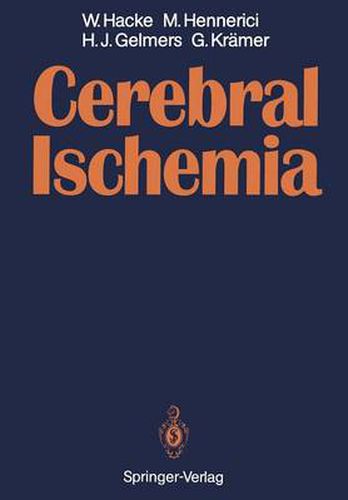Readings Newsletter
Become a Readings Member to make your shopping experience even easier.
Sign in or sign up for free!
You’re not far away from qualifying for FREE standard shipping within Australia
You’ve qualified for FREE standard shipping within Australia
The cart is loading…






This title is printed to order. This book may have been self-published. If so, we cannot guarantee the quality of the content. In the main most books will have gone through the editing process however some may not. We therefore suggest that you be aware of this before ordering this book. If in doubt check either the author or publisher’s details as we are unable to accept any returns unless they are faulty. Please contact us if you have any questions.
Despite a worldwide reduction in its incidence, stroke remains one of the most common diseases generally and the most important cause of premature and persistent disability in the industrialized countries. The most frequent cause of stroke is a localized disturbance of cerebral circulation, i.e., cerebral ischemia. Less common are spon taneous intracerebral and subarachnoid hemorrhages and sinus ve nous thromboses. The introduction of new diagnostic procedures such as cranial computed tomography, magnetic resonance imaging, digi tal subtraction radiologic techniques, and various ultrasound tech niques has led to impressive advances in the diagnosis of stroke. Through the planned application of these techniques, it is even possible to identify the pathogenetic mechanisms underlying focal cerebral ischemia in humans. However, these diagnostic advances have made the gap between diagnostic accuracy and therapeutic implications even greater than before. This fact can be easily explained. In the past, therapeutic studies had to be based on the symptoms and temporal aspects of stroke; it was impossible for early investigations to consider the various pathogeneses of cerebral ischemia. Inevitably, stroke patients were treated as suffering from a uniform disease.
$9.00 standard shipping within Australia
FREE standard shipping within Australia for orders over $100.00
Express & International shipping calculated at checkout
This title is printed to order. This book may have been self-published. If so, we cannot guarantee the quality of the content. In the main most books will have gone through the editing process however some may not. We therefore suggest that you be aware of this before ordering this book. If in doubt check either the author or publisher’s details as we are unable to accept any returns unless they are faulty. Please contact us if you have any questions.
Despite a worldwide reduction in its incidence, stroke remains one of the most common diseases generally and the most important cause of premature and persistent disability in the industrialized countries. The most frequent cause of stroke is a localized disturbance of cerebral circulation, i.e., cerebral ischemia. Less common are spon taneous intracerebral and subarachnoid hemorrhages and sinus ve nous thromboses. The introduction of new diagnostic procedures such as cranial computed tomography, magnetic resonance imaging, digi tal subtraction radiologic techniques, and various ultrasound tech niques has led to impressive advances in the diagnosis of stroke. Through the planned application of these techniques, it is even possible to identify the pathogenetic mechanisms underlying focal cerebral ischemia in humans. However, these diagnostic advances have made the gap between diagnostic accuracy and therapeutic implications even greater than before. This fact can be easily explained. In the past, therapeutic studies had to be based on the symptoms and temporal aspects of stroke; it was impossible for early investigations to consider the various pathogeneses of cerebral ischemia. Inevitably, stroke patients were treated as suffering from a uniform disease.